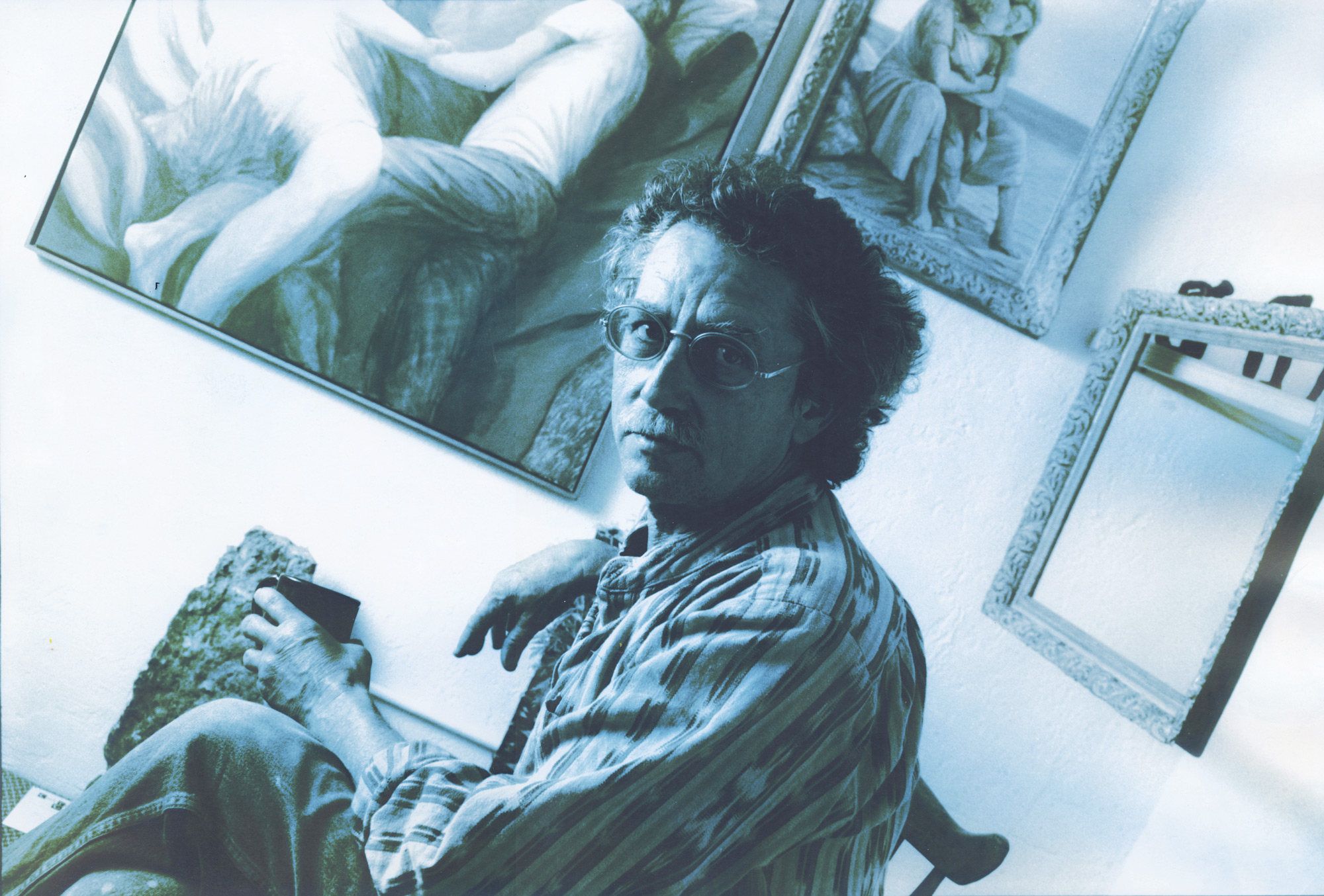
‘If I can produce only one beautiful work of art I shall be able to rob malice of its venom, and cowardice of its sneer, and to pluck out the tongue of scorn by the roots.’
—Oscar Wilde
Gary Ray Chafe died on his 80th birthday, surrounded by family. Since his well-attended 75th birthday party at the Veterans’ Memorial Building, Gary had suffered a swift decline. Afflicted by Lewy body syndrome, a terrifying neurological disease, Gary was able to recognize friends and family despite the illness, and he was lucid, at intervals, until the end.
If you have lived in Santa Barbara for a while, chances are you either knew Gary or know someone who did. To accompany Gary on a short walk in Santa Barbara was to stop often and chat with friends, artists, and associates. From Mountain Drive to downtown, he had a series of wonderful, whimsical studio homes.
Gary was born in Pasadena to Edmee Silva and Ray Chafe. In 1948 the family moved to Santa Barbara, where his father worked for SoCal Edison. He graduated from Santa Barbara High in 1955, where he cartooned and practiced his graphic skills illustrating school posters. Gary is survived by his younger sisters, Diane and Cheryle.
He served in the U.S. Navy 1955-’57, with ports of call in the Philippines, Japan, Hong Kong, and Korea. He was profoundly influenced by Asian art. The ship’s admiral noticed his graphic skills, and he was promoted to serve as draftsman/illustrator on their mapmaking mission. He reminisced about once swimming with his shipmates in a place where, he said, “The ocean was over a mile deep.”
Gary earned an associate degree from Santa Barbara City College, where he studied with Charles Atkinson. He married Wendy Ann Barnes in 1959. His greatest pride was their daughter, Maya, and later his granddaughter, Alishanee. He was married to Waltraud Kuerschner from 1965 to 1968.
In 1964 he opened The First Press at 129 East Canon Perdido Street, where he hand-set type, printed on a vintage press, and framed artwork. He also showed his work there, along with the works of a few artist friends. A social creature, he loved cultural events and parties. A constant source of civic action and ideas, Gary loved to get disparate groups of people involved.
Fifty years ago he started the Yes Store, a Santa Barbara artists’ cooperative that still thrives. He organized a mass bike ride. He collaborated with dancers on multimedia projects and created murals, T-shirts, book covers, and greeting cards. In the ’70s, he became involved in Santa Barbara’s Frisbee scene, designing art for the discs (winning the 1979 Wham-O Disc Design of the Year) for the Santa Barbara Condors ultimate team and playing on the team called the Santa Barbara Ducks. He painted sets for the Alhecama Theatre, taught printmaking at Adult Education, published Connextions (a quarterly art and poetry magazine) for four years, helped to open Our Daily Bread, and ran the Noh Gallery and the Café Perdido.
He was an activist who marched against Big Oil and the Vietnam War and created satirical artwork related to all sorts of abuses and injustices. A constant questioning of authority was central to his character. Although protest was a big part of his art, it was by no means his sole focus. His work was figurative rather than abstract, not merely reproducing what he saw, but, more important, how he saw it or how he felt it. His renderings of the human condition or of nature’s beauty continue to be relevant and to make emotion palpable on paper.
Gary made art almost every day of his life, moving between media easily, creating etchings, oil paintings, stone and bronze sculpture, wooden toys, wax-cast jewelry, and, most masterfully and prolifically, monotype prints. After a series of great downtown residences, he finally stayed for more than 25 years at 202 West Canon Perdido Street in a live/work studio, with his hand-crank press as the centerpiece. His work has been shown in New York, Los Angeles, and New Mexico and is represented at the Santa Barbara Museum of Art, Phoenix Art Museum, and in many private, corporate, and public collections throughout the U.S.
A knowledgeable art historian and dealer, Gary once bought a pot painted and signed by Picasso for $8 at a yard sale. In the ’90s I watched from a Manhattan sidewalk as he pulled a signed Corita Kent poster out of a dumpster. He did short stints as mail carrier and cab driver, but he basically supported himself with art for more than 60 years, despite having no patience for the political intrigues of galleries or art-world fashion. He kept his own uncompromising set of standards, but by refusing to bow, he never enjoyed representation and was mostly collected by a regional group of aficionados.
Describing Gary’s life and sphere of influence is impossible to do on one page. His big heart touched so many. Countless people tell how he was their first friend in Santa Barbara, how he set them on their artistic paths, how he saved them from desperate situations, how he helped them “see color in music,” how he was so generous, considerate, and humorous.
A show of his work is up at Studio One Eleven (111-A Santa Barbara St.) through October 9, open 1-6 p.m, Thursday-Saturday, or by appointment. Sale proceeds go toward his daughter Maya’s efforts to preserve his legacy. A public memorial and private collection art share is planned at the Community Arts Workshop (631 Garden St.) on Saturday, October 7, 5-8 p.m. If people would like to show their Gary Chafe artwork at that event, contact Maya at mayachafe777@hotmail.com. The new garychafe.com website goes up that day. In lieu of flowers, please buy artwork.
‘To play is most important.’
—Gary Chafe
